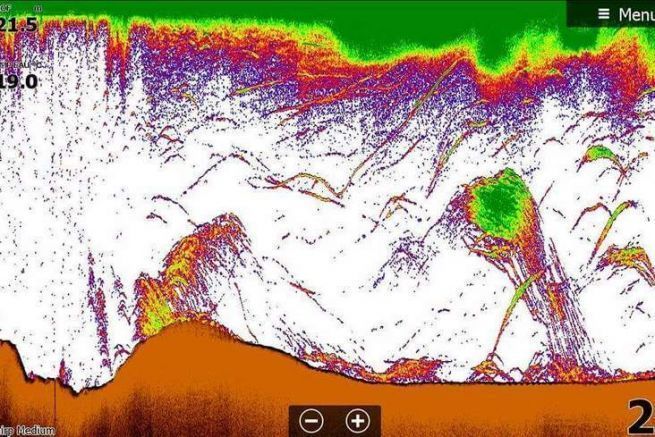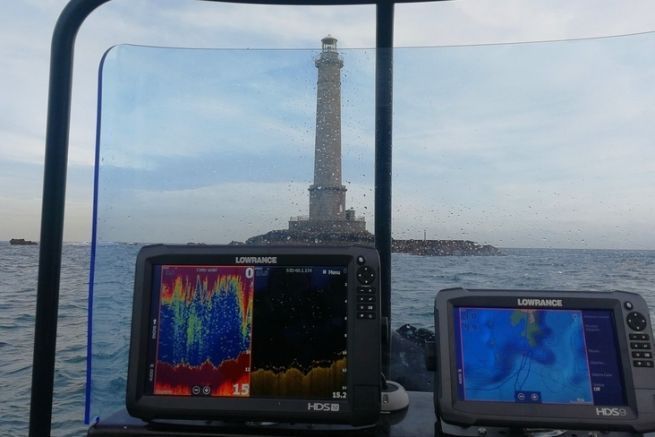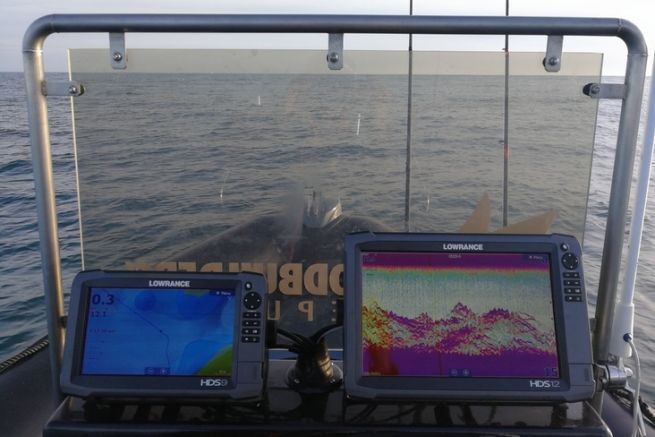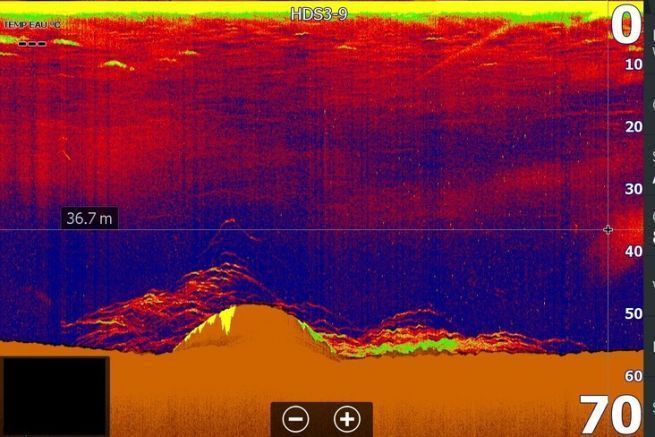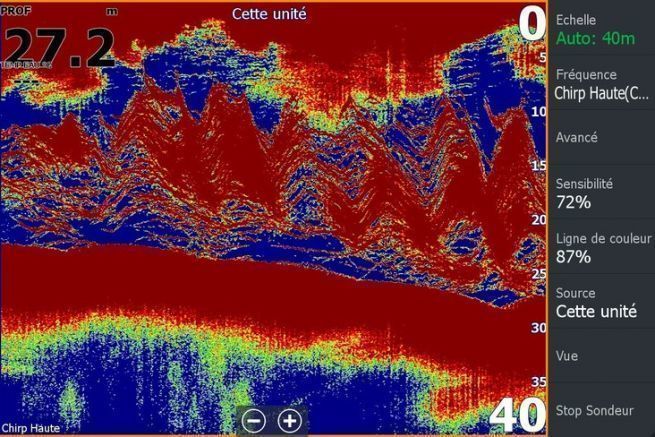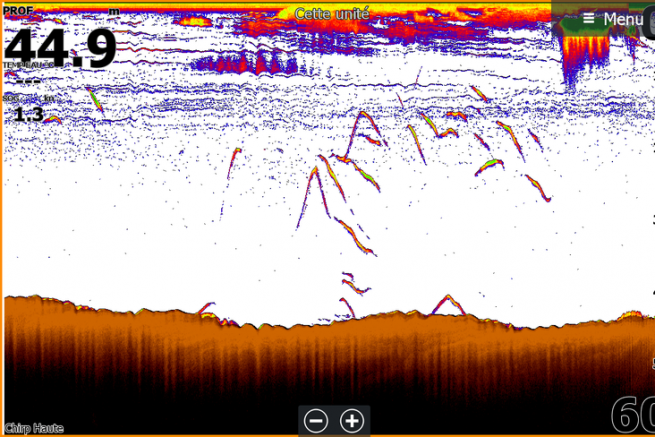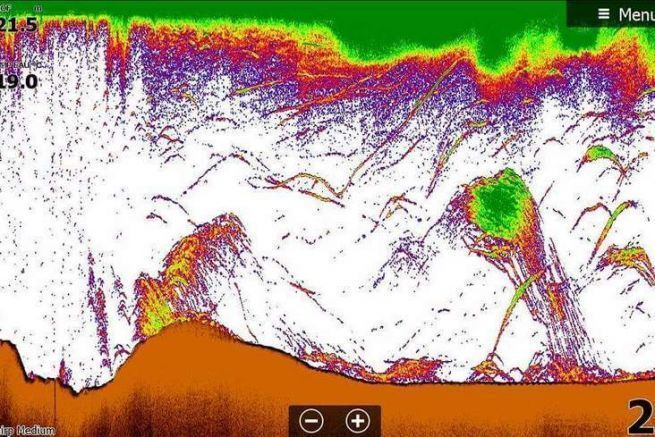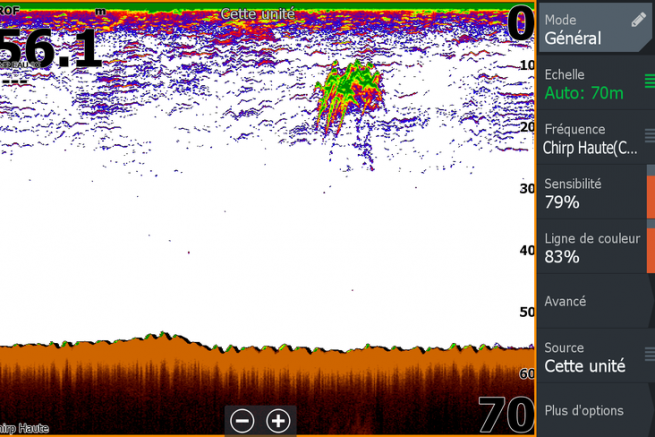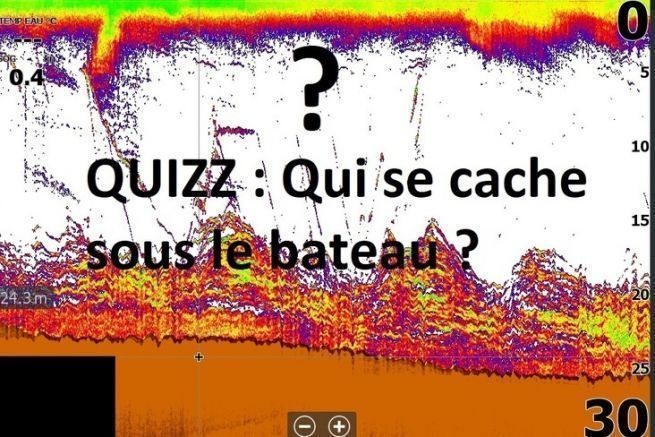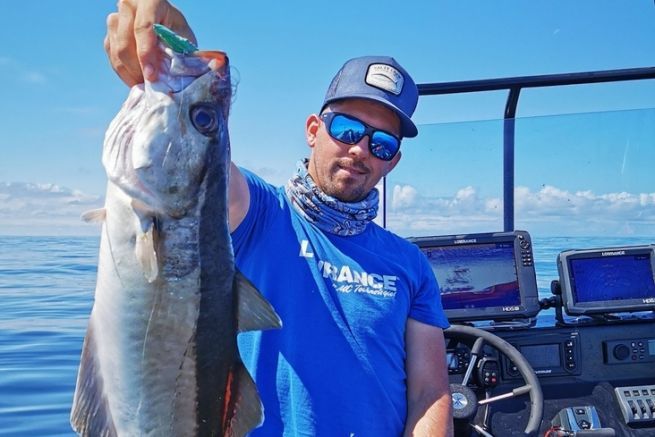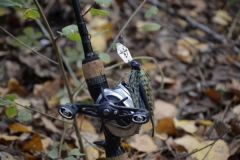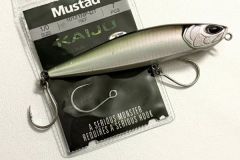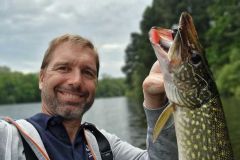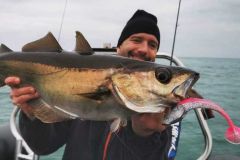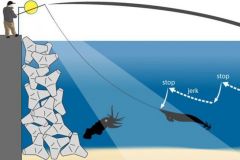One of the keys to successful sea fishing is to locate the food of predatory fish. There are many different kinds of predator fish, depending on the season: crabs, shrimp and other crustaceans or small forage fish. These are the ones you'll be able to locate with your sonar.
Detection in open water or on the bottom
Depending on the species forming the food balls, you will find them either in the open water or near the bottom.
The so-called "blue fish" such as sprats, sardines or mackerel, live in open water. You will rarely see them detected at the bottom.
On the other hand, the lures will be closer to the bottom. Depending on the position of the detection, you will be able to identify the type of forage fish and then choose the right lure to try to catch a predator roaming around.
Balls clearly visible on your screen.
These small fish live in schools of varying sizes to protect themselves from predators. The result on your sonar unit will be a compact mass offering a strong return, that is, a bright color depending on the palette selected.
This first capture (Lowrance paddle 13) shows a wreck with active yellows upstream.
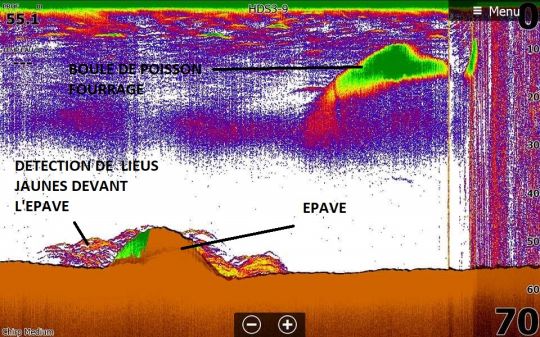
This one also shows us a very compact matte of forage fish. This ball is so compact that it was impossible for the probe (AIRMAR CHIRP B75H) to discriminate the echoes from each other. This leads me to believe that these are small fish such as sprat (this catch was made in August, the sand eels had left the area).
On detections of sandeels or small sprats, it will be difficult to make the distinction with the sounder. Only a knowledge of the sector and the seasonality of these species as well as their behavioral habits will allow you to deduce who is behind this detection.
Generally speaking, in the spring, you will find mainly sandeel. As the summer approaches, these leave their place to small blue fish such as sprat.
Identify surrounding predators
You'll usually find that around a forage fish detection, larger echoes appear corresponding to predators feeding on them.

In this second screen shot, a ball of forage fish is quite close to the bottom corresponding to sand lance.
I deduced this because this capture was made in June, near a sandy area. The detection, close to the bottom, confirms my idea too.
If you look closely, you will notice that upstream (to the left) of this ball, some larger echoes stand out. These are yelloweye hunting in the fry.
So I'm going to use a slug lure that looks as much like a sandeel as possible to minimize the chances of triggering an attack.
Marking detections
I usually mark on my sonar the detections I encounter during an outing. This will create a waypoint on my chart so I can return to the area later if I wish.
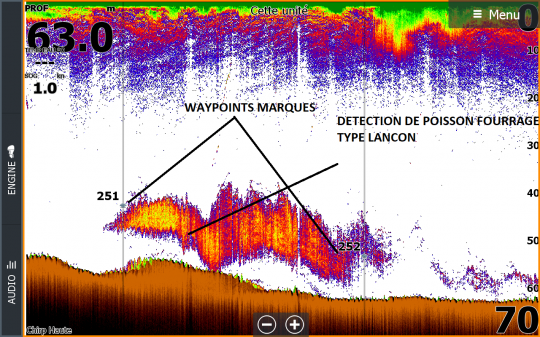
Then I sort out the detections of posted fishes that I am likely to find the next time and those corresponding to food.
These will certainly not be present on a future release.
However, it is worth marking them, even for just one day. This allows me to know where the forage is located and therefore an area where I am likely to cross the path of predatory fish such as bass, pollock, etc.
To remember
- Forage fish detections are characterized by compact balls.
- Depending on the species composing these banks, the detections will be more or less close to the bottom.
- Mark the food detections, this will let you know where predators can potentially pass.

 /
/ 